Trial of JLD dike stabilizer: reinforcing dike with diagonally placed elements.
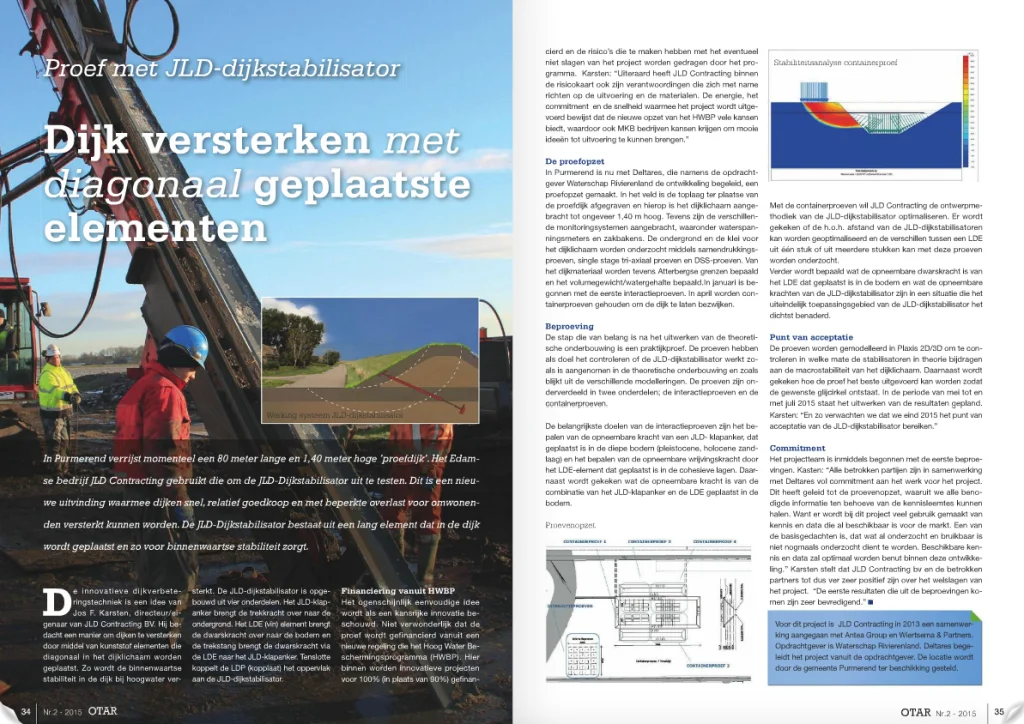
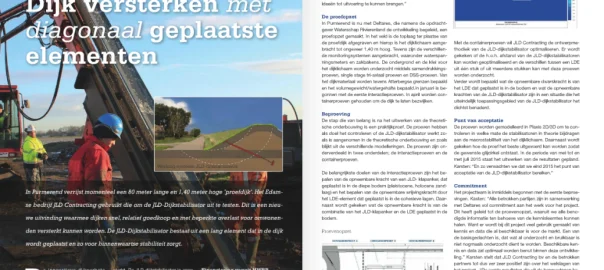
Trial of JLD dike stabilizer: reinforcing dike with diagonally placed elements.

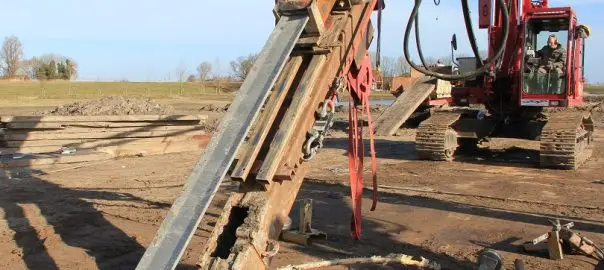
The project team is busy carrying out the tests of the dike stabilizer. The first phase tests are the so-called interaction tests which are currently being performed in the test field in Purmerend. The testing consists of various tensile tests in which the dike stabilizer is tested in different configurations. In addition to pulling on a single LDE or clad anchor, the dike stabilizer is tested in its total configuration (LDE with clad anchor).
The dike stabilizers were first applied in the test field using a machine specially developed by JLD contracting.
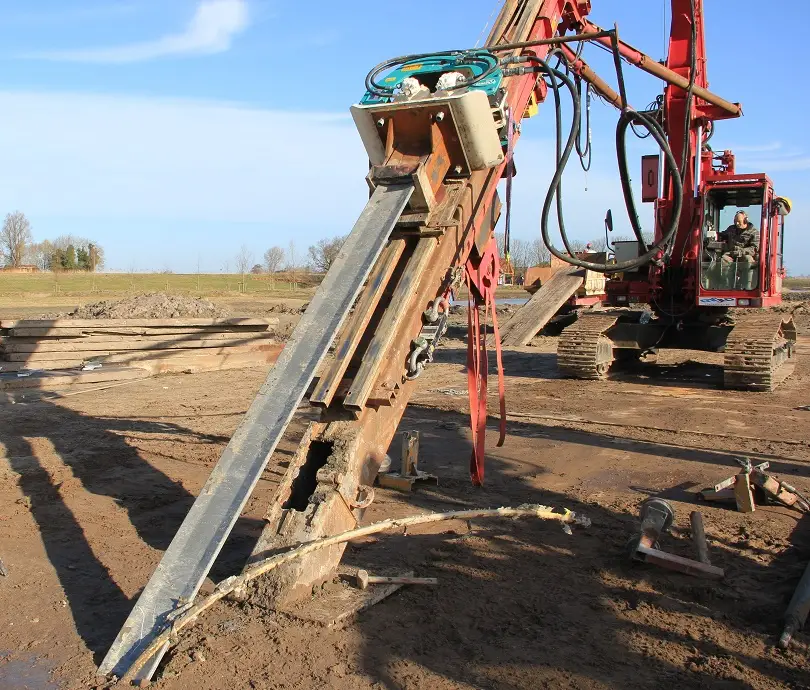
Next, all the dike stabilizers installed are tested piece by piece. This involves pulling on the dike stabilizer using an auger.
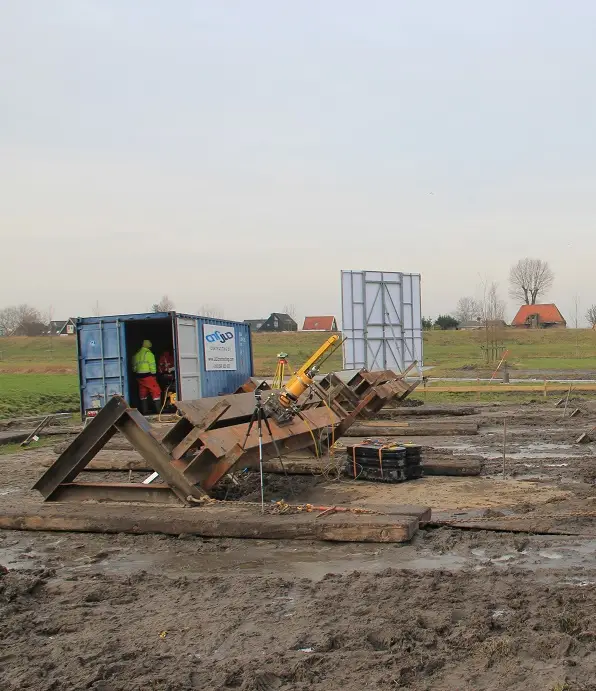
Currently, almost all the test of this phase have been completed, the results are satisfactory.
Meanwhile, preparations for conducting the next phase of tests, the container tests, have started.
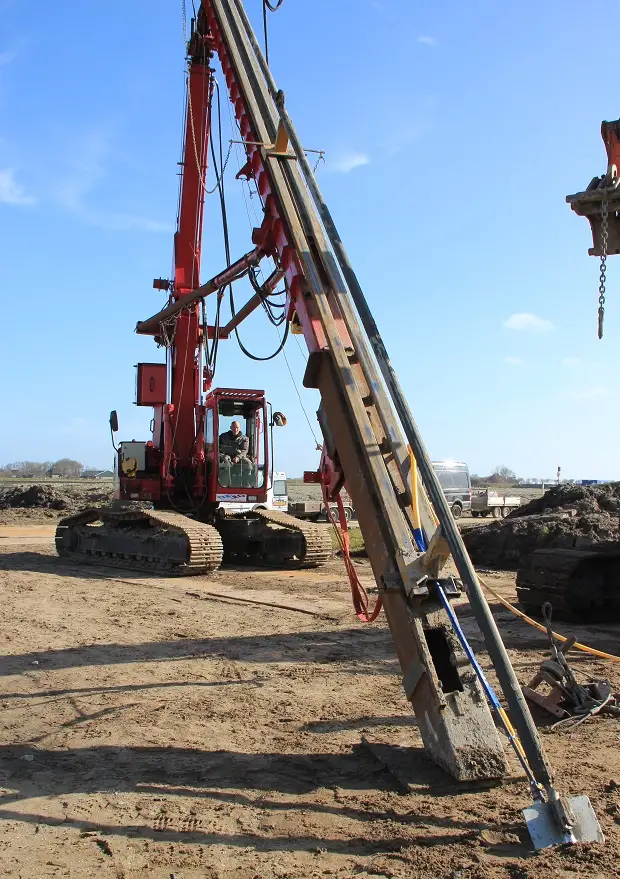
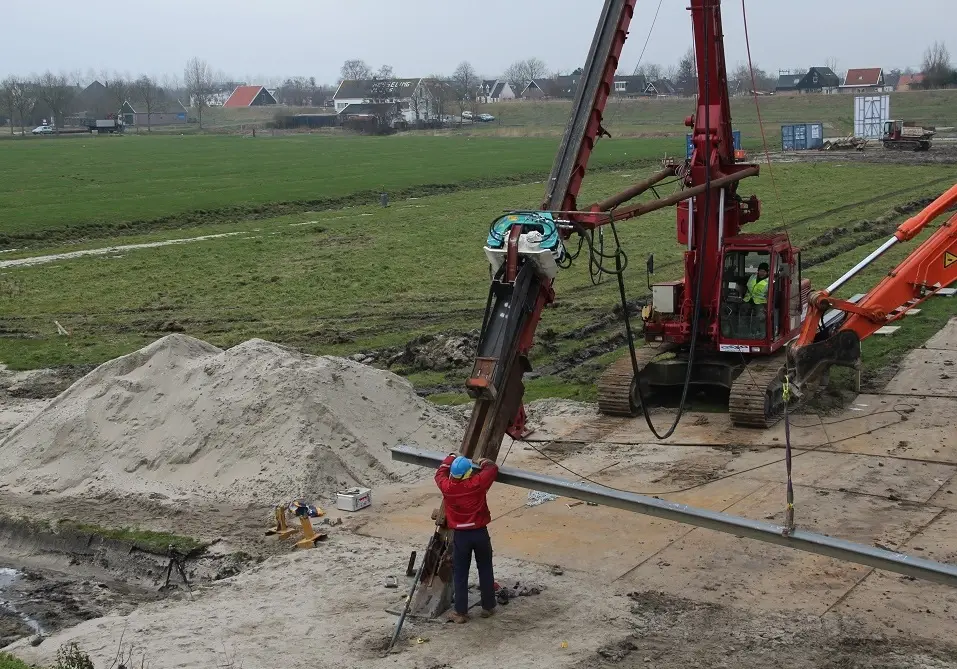
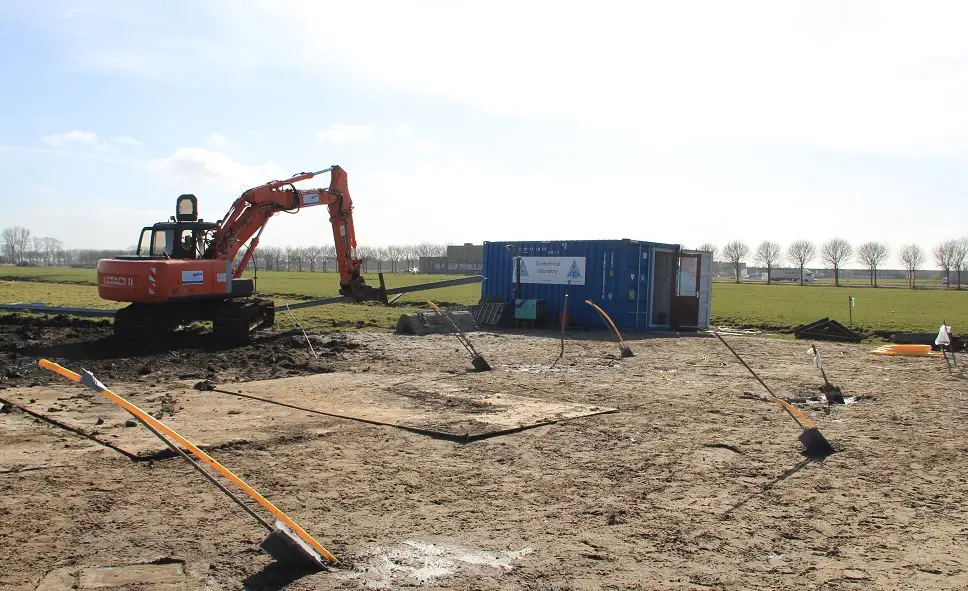

Article from North Holland newspaper 07-02-2025
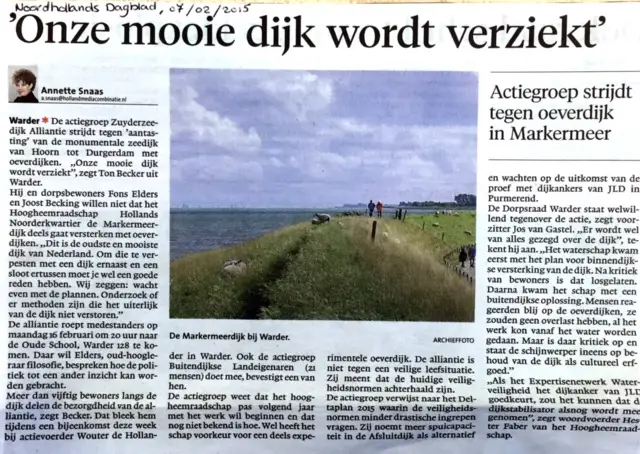
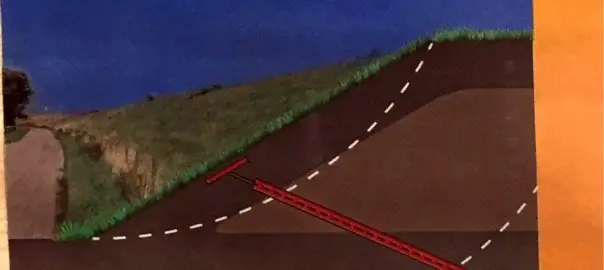

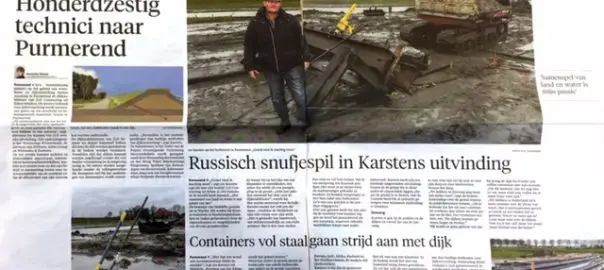
One hundred and sixty technicians to Purmerend.
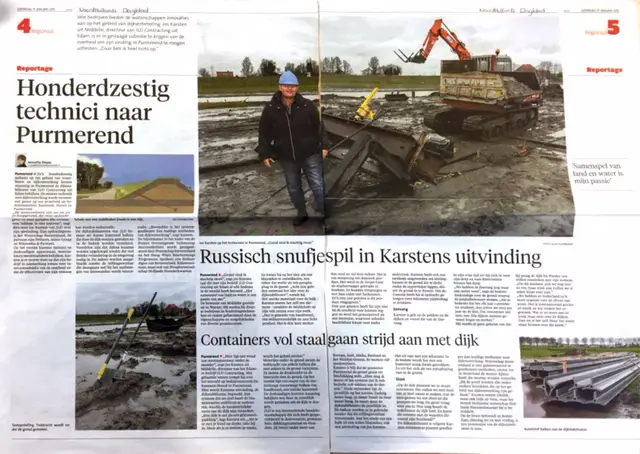
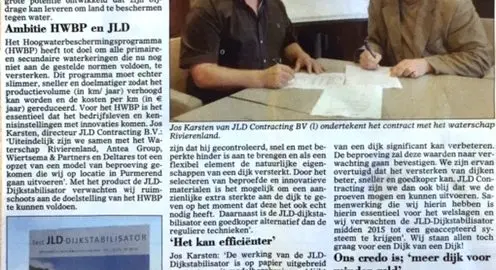
Edam-based JLD Contracting starts trials to strengthen dikes with revolutionary dike stabilizer.
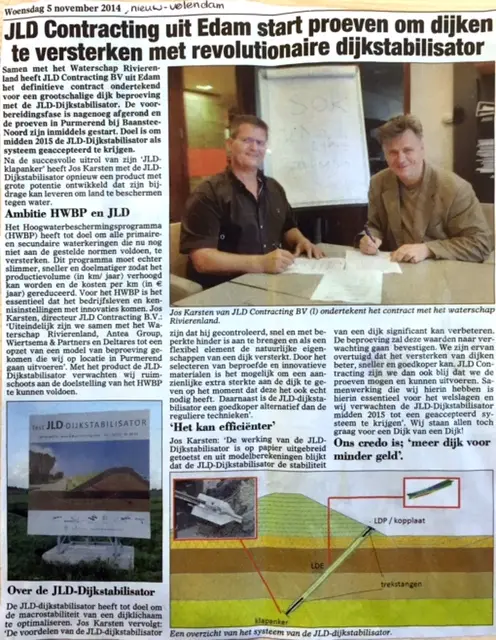
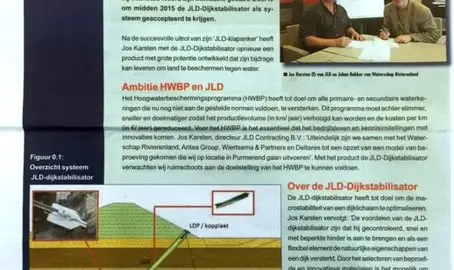
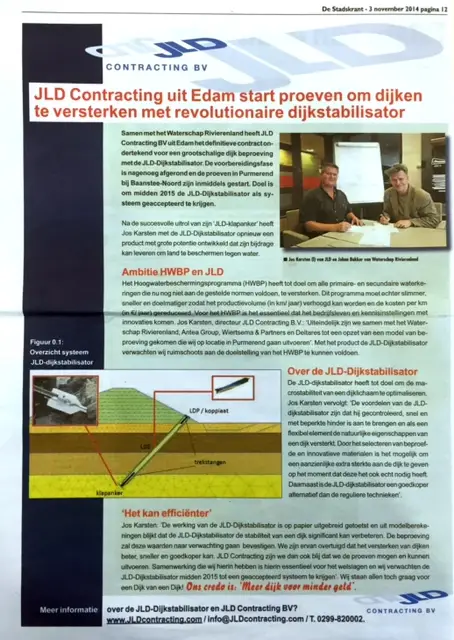

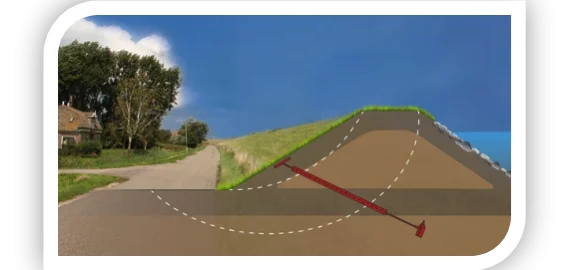
In 2013, JLD Contracting BV entered into a partnership with Antea Group and Wiertsema & Partners. With the support of these partners, JLD Contracting BV has entered into a unique partnership with Waterschap Rivierenland to bring the JLD dike stabilizer from a concept to an accepted system within the program of the HWBP. This innovative dike improvement technique, which aims in particular to improve inward stability, is an implementation and patented idea of Mr. Jos F. Karsten, director/owner of JLD Contracting BV, based in Edam. Together with the partners, a test design was made with Deltares who supervised the development on behalf of the client Waterschap Rivierenland. After very extensive soil research and a computational exercise and many consultations, the tests were started at a site provided by the Purmerend municipality. One of the basic thoughts is that what is already researched and useful should not be researched again. This data that is mostly available to the market will be used optimally within this development. Below we give an outline of how the system will work and how the testing will take place.
Status of development of JLD dike stabilizer
The preparation phase is complete and the project team has started the first trials. All parties involved, in cooperation with Deltares, are fully committed to the project. This has led to the test design from which we can extract all the necessary information for the benefit of the knowledge gaps.
In the field, the topsoil was excavated at the site of the test dike and on it the dike body was installed to a height of about 1.40 m. The various monitoring systems were also installed, including pore pressure gauges and pocket beacons. The subsoil and the clay for the dike body are being investigated by means of compression tests, single stage tri-axial tests and DSS tests. Atterberg limits and volume weight/water content are also determined of the dike material.
The tests are modeled in Plaxis 2D/3D to check to what extent the stabilizers theoretically contribute to the macrostability of the embankment body and how best to conduct the test so that the desired slip circle is created. On the right, an illustration of the work on the stability analysis for the container test/test embankment .
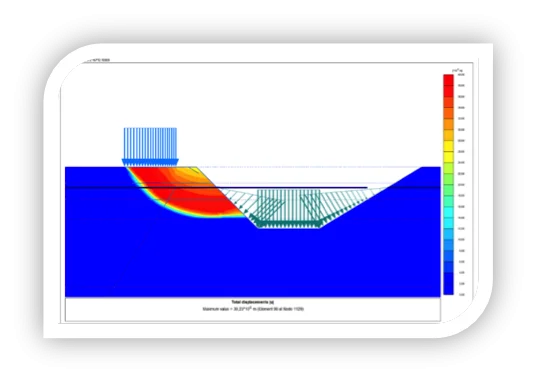
Figure 1: Stability analysis container test
Planning
Operation system JLD dike stabilizer
Goal: Improve inward stability
The JLD levee stabilizer is composed of four components:
| Clap Anchor | Transfers tensile force to the substrate |
| LDE (fin) | Element transfer transverse force to the bottom |
| Pull Rod | Brings transverse force via LDE to JLD folding anchor/LDE |
| LDP (header plate) | Couples surface to JLD dike stabilizer |
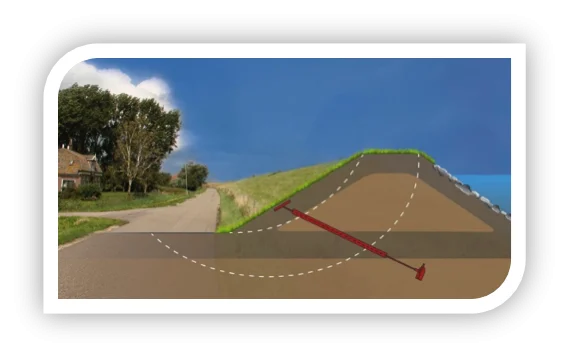
Figure 2: Operation system JLD dike stabilizer
Testing system JLD dike stabilizer
The step of interest after developing the theoretical underpinnings is a
field test. The tests aim to verify that the JLD dike stabilizer works as assumed in the theoretical underpinnings and as shown in the various modeling studies. The tests are divided into two parts; the interaction tests and the container tests.
Main objective interaction trials:
Main target container trials:
 Figure 3: Test design
Figure 3: Test design
Development costs
The entire development is made possible by the new arrangement provided by the HWBP.
Within the new scheme, innovative projects are financed 100% (instead of 90%) and the risks associated with the possible failure of the innovation are borne by the program. Of course, JLD Contracting also has its responsibilities within the risk map that focus on implementation and materials. The energy, commitment and speed with which the project is carried out proves that the new set-up of the HWBP offers many opportunities that can also offer SMEs the opportunity to bring great ideas to fruition.
In the Scan done annually by the HWBP, the JLD Dike Stabilizer is also seen as very promising.
JLD Contracting bv and its partners are very positive about the success of this development. The first results coming from the tests are very satisfactory.
Last January 20 to 23, JLD Contracting was present at the Infratech 2015 exhibition in Ahoy Rotterdam.
This edition of the InfraTech exhibition JLD was there with a beautiful stand to promote, in addition to the successful concept "JLD clap anchors", the latest developments called the Dike Stabilizer and the VPPS (pipeline pressure system).
De JLD-Dijkstabilisator is een project waar JLD Contracting momenteel samen met partners Antea group, Wiertsema & Partners en Waterschap Rivierenland aan werkt om devar link = document.getElementById(‘link2736’);link.onclick = function(){document.location = link.getAttribute(‘href’);} dijken te versterken. De uitvoering vindt plaats binnen het HWBP programma,
"POV Macrostability. The VPPS is a project that JLD Contracting is working on with partner Gasunie to quickly construct transport pipelines in the ground cheaply and effectively, among other things, or press them deeper in case of coverage defects. .
The booth was well attended and there were many interested parties.
More news about the Klapankers, Dike Stabilizer and VPPS soon!
Bekijk hiervar link = document.getElementById(‘link2736’);link.onclick = function(){document.location = link.getAttribute(‘href’);} onder de video’s die op de beurs zijn vertoond: